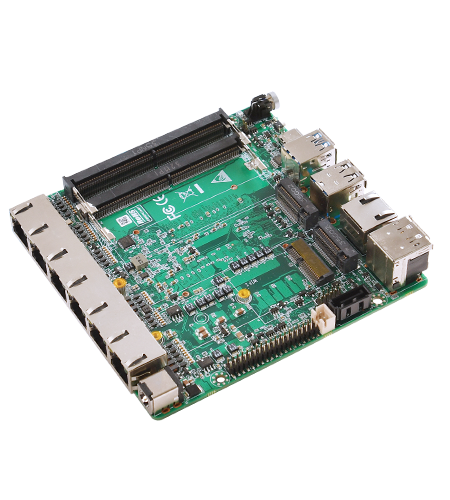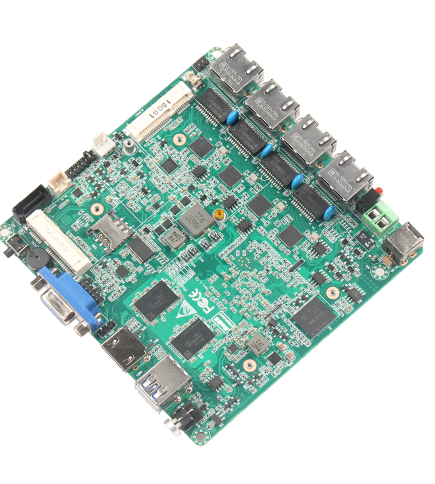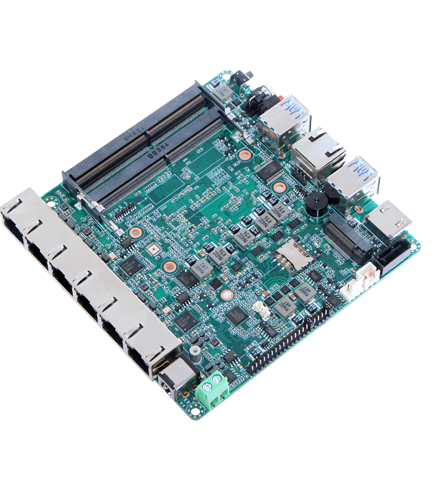
PIESIA, водещо национално високотехнологично предприятие, е специализирано в изследванията, разработката, производството, продажбите и следпродажбените услуги на дънни платки за индустриално управление, цялостни системи, компютри и свързани продукти. В областта на киберсигурността нашите дънни платки със защитна стена се открояват като крайъгълен камък на защитата. Тези дънни платки са проектирани с авангардни технологии, за да осигурят стабилни мерки за сигурност за различни индустрии. Чрез интегриране на разширени функции за защитна стена, дънните платки за защитна стена на PIESIA осигуряват незаменим слой на защита срещу кибер заплахи, което ги прави основен компонент за бизнеса, който търси сигурни и надеждни компютърни решения.
В ера, в която сигурността на данните е от първостепенно значение, дънните платки със защитна стена на PIESIA предлагат несравнима защита за критични приложения. Нашият ангажимент към иновации и високи постижения ни позиционира като лидер в индустрията, обслужвайки разнообразните нужди на нашите клиенти. С дълбоко разбиране на индустриалния контролен сектор, дънните платки със защитна стена на PIESIA са проектирани да издържат на строгите изисквания на индустриалната среда, като същевременно поддържат силна защита срещу потенциални кибератаки. Избирайки дънните платки със защитна стена на PIESIA, организациите могат да подобрят позицията си на киберсигурност и да защитят операциите си, като гарантират безпроблемна непрекъснатост в своите бизнес процеси.

Ние сме PIESIA, главна национална високотехнологична компания, която специализира изработка, производство, продажба и следпродажби услуги на индустриални контролни майбуски, ембедирани системи, ПК и други. С голяма гордост представяме нашата следваща генерация мрежова плоча за брана.
Материнската плоча на брандваfer-а на PIESIA е проектирана да осигурява непосредствена защита на чувствителните данни на ин dustриалните системи за управление. Иновативната технология на PIESIA е предназначена да защитава бизнеса срещу потенциални кибер угрози, позволявайки му да работи без никакви страхи.
Това е изборът на индустрията поради нейната безпрецедентна производителност и надеждност в терена. Тя е специално проектирана да функционира добре в индустриална среда, комбинирайки физически и логически механизми за защита. Поради това нашата екип от експерти е интегрирала най-новите технологии на брандваfer-а за непрекъсната защита, без да влияе на скоростта на системата. Брендът PIESIA винаги става по-далеч, предлагайки на клиентите си продвинати матерински плочки на брандваfer-а, които са адаптирани към уникалните изисквания на индустриалната система за управление.

В индустриалните компютри най-важните аспекти са безопасността и надеждността. PIESIA е водещ доставчик на енергийно ефективни и високопроизводителни дънни платки със защитна стена, проектирани специално за днешните предизвикателни индустриални среди.
Тези дънни платки с защитна стена са изградени със строги мерки за сигурност, за да предпазят чувствителните данни и основните системи от външна вреда. С авангардна технология за защитна стена, вградена в дънната платка, тези платки осигуряват непобедима база за индустриални мрежи по отношение на неоторизиран достъп и злонамерени атаки.
Освен това нашите дънни платки със защитна стена са оптимизирани, за да осигурят превъзходна производителност и надеждност. Те са проектирани за тежък живот в най-суровите индустриални среди, работещи непрекъснато, което включва повишено разпръскване на топлина и избор на здрави компоненти. Като такива, вашите системи ще продължат да работят без никакви проблеми, дори ако са изправени пред най-лошите условия.

В бързо променящия се свят на индустриалния контрол и автоматизация, мрежовите решения, които са надеждни и сигурни, са от най-голяма важност. В PIESIA можете да намерите техните модерни матерински платки с огнена стена, за да изпълнят изисканията на днешната индустрия.
В PIESIA разбираме, че силна и ефективна мрежова инфраструктура е от съществено значение за промишлените операции. Този принцип определя нашите фирвейл материни плати, които предлагат непрецедентна производителност, както и надеждност. Гарантираме, че всяка фирвейл материна плата отговаря на стандартите за качество и функционалност благодарение на нашите продължителни методологии за проектиране и производство.
Материнските плати за фирвейл на PIESIA разполагат с някои ключови характеристики, включително sofisticirani сигурници. Нашите инженери са разработили няколко сложни сигурничен протоколи и функции, за да защитят вашата промишлена мрежа от различните кибер угрози, които съществуват днес. Ако имате чувствителни данни или просто трябва да поддържате целостта на мрежата си, този вид материна плата предлага правилния ниво на защита, за да може бизнесът ви да функционира безпроблемно.

И така, PIESIA е името на китайска компания седалище в Шенжен, чиято дейност включва производство, продажба и предоставяне на следпродажни услуги за индустриални контролни майчини, интегрирани системи, компютри и други свързани продукти. Но нека сега разгледаме най-новите и най-иновативни решения за майчини с функцията 'файрвол'. Поради това, че нашите майчини с 'файрвол' са изключително сигурни с концепция в дизайна, която гарантира, че операциите няма да спират.
Осигуряваме също и персонализирани 'файрволи', за да отговаряме на moderne днешните изисквания на индустриите, ползвайки нашия опит.

Фирма Шенжен ЗунСия Интелиджент Технолоджи Ко., Лтд. Основана през 2009 г., фирмата е национално високотехнологично предприятие, което се фокусира върху научно-изследователската, разработването, производството, продажбата и следпродажните услуги на индустриални контролни майчини, цели машини, компютри и свързани продукти, с 14+ години опит в индустрията.
Ние предлагаме на клиентите ни услуги на един етап с персонализиран подход , Нашият продукт намира широки приложения в промишлена автоматизация, комуникационни устройства, енергосистеми, мрежова сигурност, интелигентни транспортни системи, видео наблюдение, здравеопазване, защита, аерокосмическа индустрия, самоработещи терминали, съхранителни устройства, цифрови табло, вградени компютри, потребителски електроника и други.
Повече от 10 години опит в индустрията, експортиране в 23 държави.
Едноспирален продукт, който ви предлагат по-висококачествени продукти.
За да ви предоставим подходящи продуктни решения.
Предварителна ядрена технология в индустрията, внимание към детайли, строг контрол на качеството.
Материнска плоча за файрвол е специализирана компютърна материнска плоча, която е проектирана да се използва в уреди за файрвол. Тя предоставя необходимите хардуерни компоненти и интерфейси за поддръжка на функционалността на файрвола.
Материнската плоча за файрвол подобрява мрежовата сигурност чрез предоставяне на специализиран хардуер и софтуер за функционалността на файрвола. Тя помага да се монитори и контролира мрежовия трафик, да се филтрират опити за несанкциониран достъп и да се защитава срещу различни сигурносни заплахи.
Когато избирате майчината плоча на firewall, ключови характеристики, които трябва да се имат предвид, включват броя и типа на мрежовите интерфейси (Ethernet портове), производителността на процесора, капацитета на паметта, слотовете за разширение за допълнителни мрежови карти и съвместимостта с софтуер за firewall.
Да, много майчини плочи за firewall поддържат няколко мрежови зони чрез употребата на технологията VLAN (Virtual Local Area Network). Това позволява сегментацията и изолацията на различни мрежови сегменти, което повишава сигурността и възможностите за мрежово управление.
